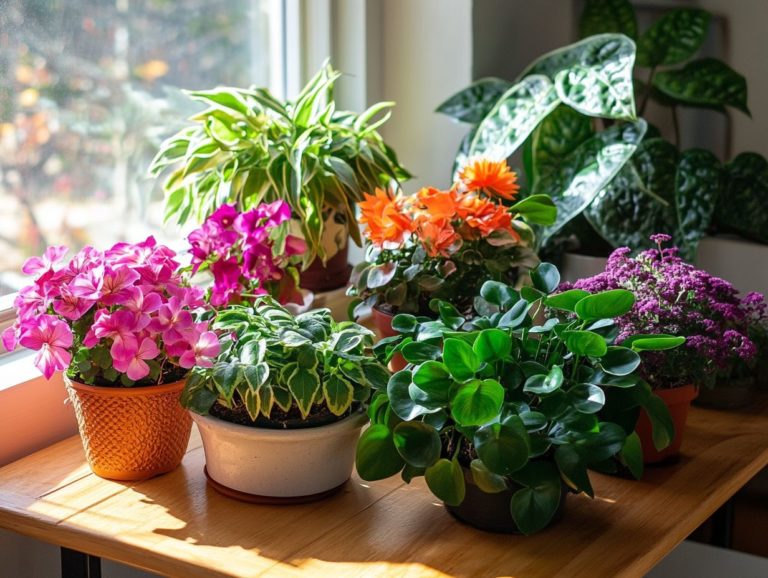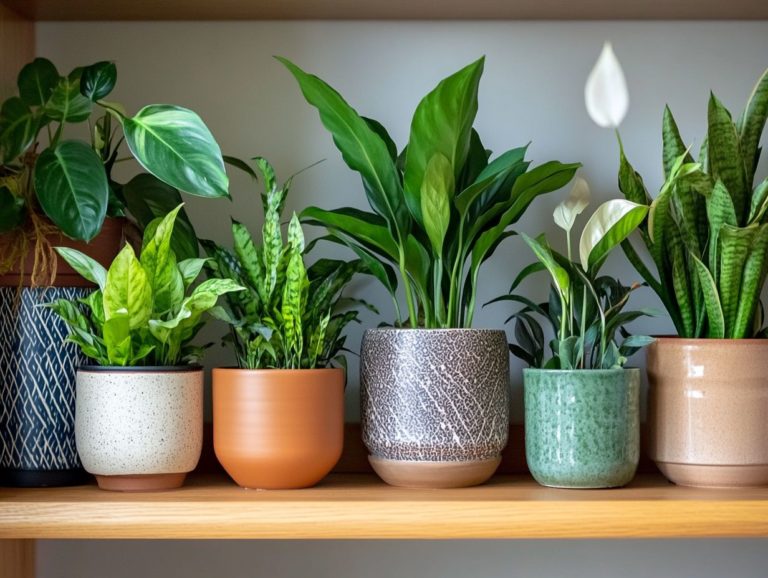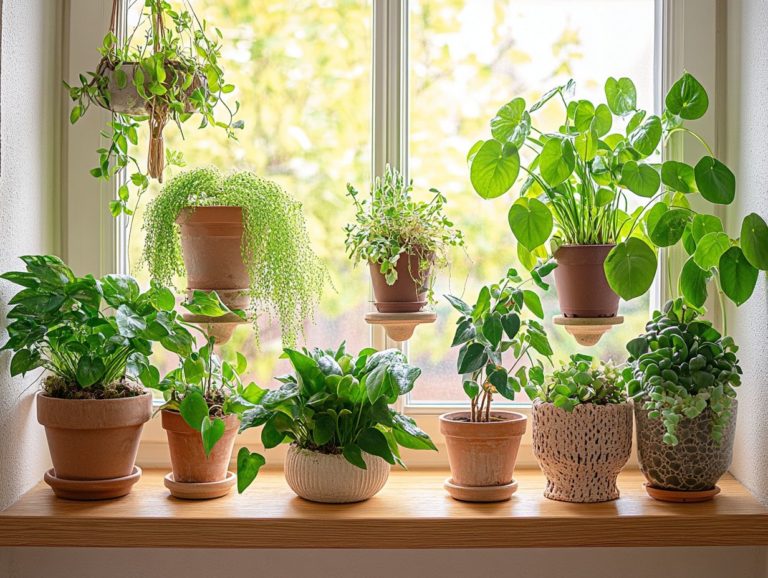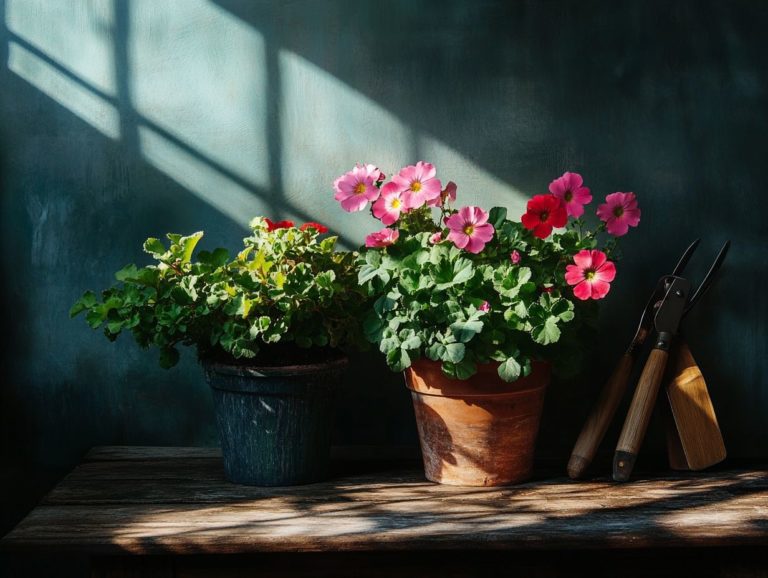Understanding Snake Plants: Care and Varieties
Snake plants, with their captivating appearance and remarkable resilience, are a top choice for houseplant aficionados.
This guide equips you with all the essential knowledge for nurturing these hardy greens, covering their light, water, and soil needs, along with information on common pests and diseases.
It also showcases popular varieties, offers creative decorating ideas, and provides practical tips on propagation and repotting.
Whether you’re a seasoned plant parent or just beginning your journey, you ll discover valuable insights to ensure your snake plants flourish.
Contents
Key Takeaways:
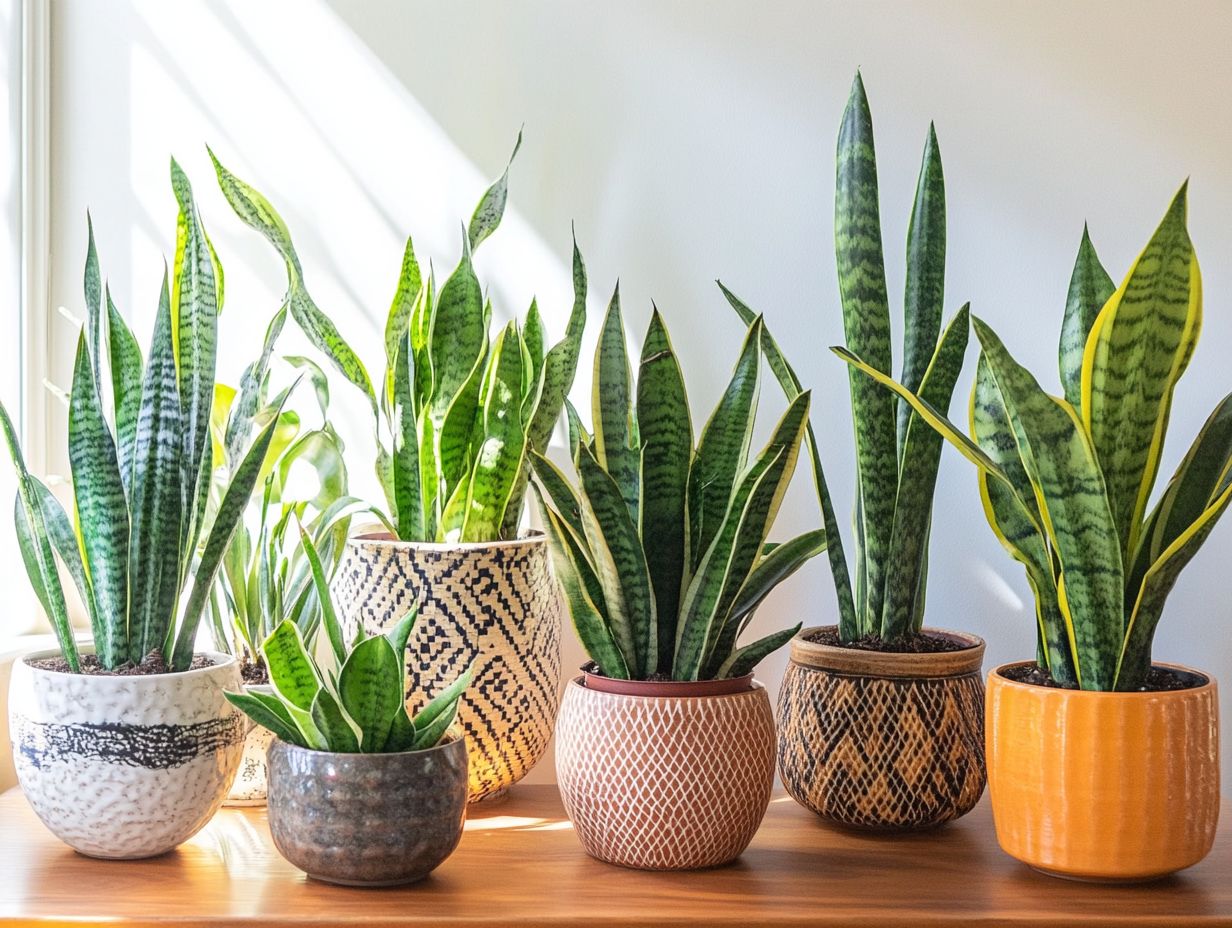
- Understanding the basic care requirements for snake plants is crucial for their survival and growth, including proper lighting, watering, and soil conditions.
- There are many popular varieties of snake plants, each with unique characteristics and appearances, making them a versatile and popular choice for home decor.
- Propagating and repotting snake plants can be done through various methods, allowing for an increase in plant population and ensuring their health and longevity.
What are Snake Plants?
Snake plants, or Sansevieria often playfully dubbed Mother-in-Law s Tongue are remarkable houseplants that hail from West Africa. With their striking, upright leaves and impressive air-purifying capabilities, these beauties are a favorite not just for their visual allure but also for their knack for enhancing indoor air quality by releasing oxygen.
As part of the Dracaena family, specifically Dracaena trifasciata, snake plants are incredibly adaptable. They thrive in various light conditions, making them a superb pick for both the green-thumbed and those just starting their plant journey.
These plants shine particularly in indoor settings. They effortlessly tolerate low light and require minimal watering an ideal choice for those navigating busy lives. With varieties that range from classic green with yellow edges to more exotic options like Silver Bay, their diversity infuses any room with charm.
Snake plants effectively filter out toxins such as benzene, formaldehyde, and trichloroethylene, significantly enhancing the air quality in your home or office. Keep them thriving by ensuring they have well-draining soil, watering them occasionally, and providing indirect sunlight simple steps that further solidify their reputation as hardy companions. Regularly dust leaves to maximize their air-purifying capabilities.
Caring for Snake Plants
Caring for snake plants requires a basic understanding of their unique needs regarding light, water, and humidity levels. By mastering these essentials, you can promote optimal plant health and elegantly sidestep common pitfalls like root rot, a condition where the roots decay due to excess water.
Light, Water, and Soil Requirements
To ensure the health of your snake plant, it s essential to provide well-draining soil, maintain an appropriate watering schedule, and select the right light conditions ideally, indirect light that promotes growth.
The ideal soil composition typically includes a blend of potting soil mixed with perlite or sand to enhance drainage. After all, moisture retention can lead to root rot, and we certainly want to avoid that. When choosing pots, you might prefer terracotta options, as they allow for better airflow to the roots and help wick away excess moisture.
Establishing a proper watering routine is crucial. This usually depends on the humidity levels in your space. Lower humidity might call for more frequent watering, whereas higher humidity can lessen the need. By keeping a close eye on these factors, you ll significantly contribute to the overall health and vigor of your beloved plant.
Common Pests and Diseases
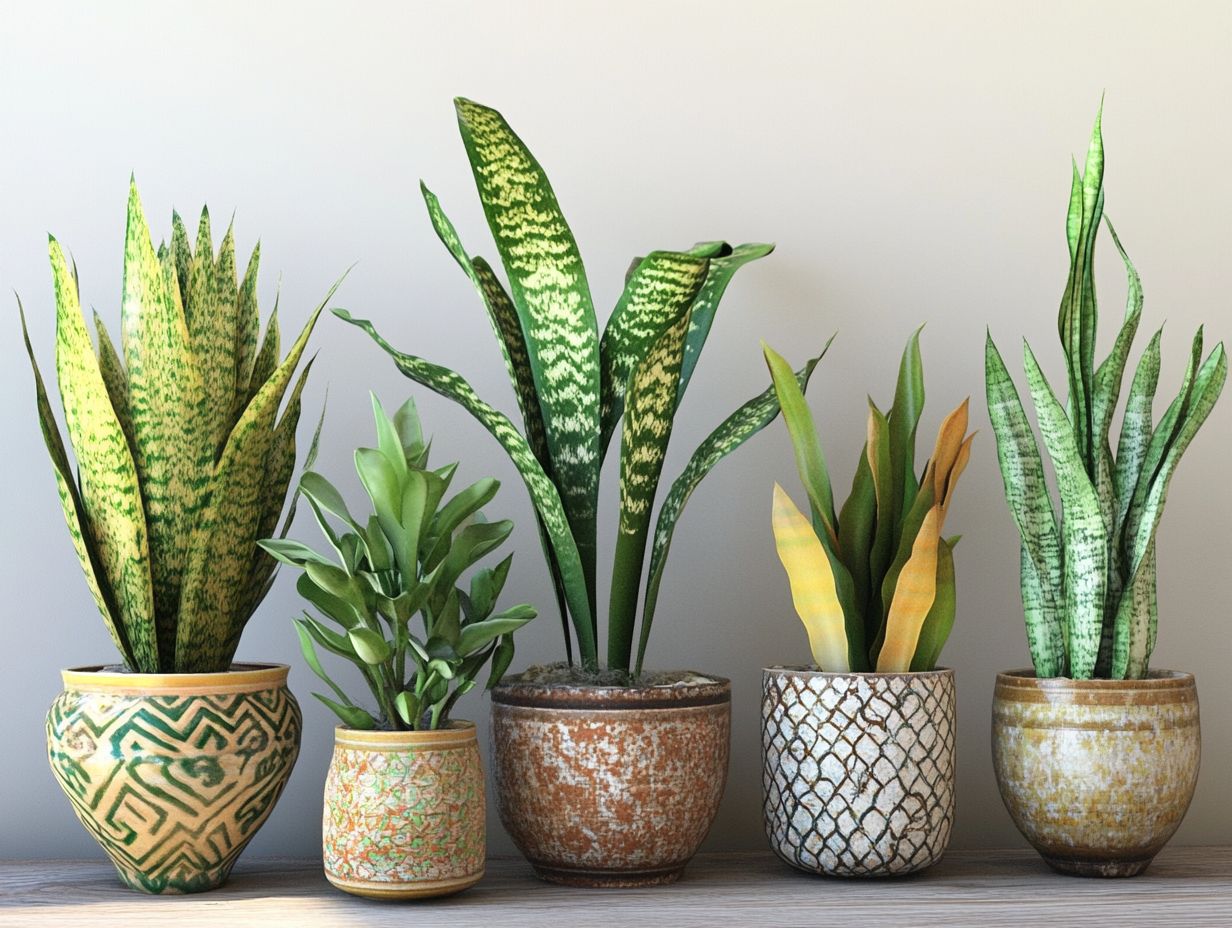
Common pests and diseases that affect snake plants often stem from poor maintenance practices, especially improper watering. This can lead to overwatering symptoms and root rot, jeopardizing the health of your plant.
These issues attract unwelcome insects, such as mealybugs, spider mites, and scale, which thrive in damp conditions. Look out for signs of pest infestations, like yellowing leaves, sticky residue, or even webbing on your plant. A weak root system sets the stage for fungus that harms plants, resulting in more undesirable symptoms.
To combat these pests and diseases effectively, regular inspections and a consistent watering schedule are essential. Using natural remedies like neem oil or insecticidal soap can help control pest populations while promoting healthier growth. This ensures your snake plant remains vibrant and resilient.
Popular Varieties of Snake Plants
Popular varieties of snake plants, such as Whale Fin, The African Spear, Moonglow, and La Rubia, make great houseplants and belong to the Dracaena family.
Each selection brings unique character, enhancing the beauty of your indoor space.
Different Types and Characteristics
Snake plants, ranging from the robust Sansevieria to the elegant Dracaena trifasciata, provide a delightful array of characteristics that cater to your aesthetic preferences and care levels.
Each species showcases distinct foliage patterns and growth habits, appealing to both novice gardeners and seasoned plant enthusiasts. For example, the tall and upright Sansevieria cylindrica features striking cylindrical leaves, adding an impressive vertical element to any space perfect for modern interiors.
In contrast, the more compact Sansevieria trifasciata presents a classic look with its dark green, sword-like leaves adorned with subtle light gray streaks. This variety blends effortlessly into rustic or traditional decor.
Both types thrive in low-light conditions and require minimal watering, making them ideal choices for busy individuals who want greenery in their surroundings without the hassle.
Decorating with Snake Plants
Decorating with snake plants can truly transform your space, offering elegant options to seamlessly integrate these stunning indoor plants into your home decor.
Not only do they enhance the aesthetic appeal, but they also improve ambiance and air quality, making your environment more inviting and refreshing.
Creative Ways to Incorporate into Home Decor
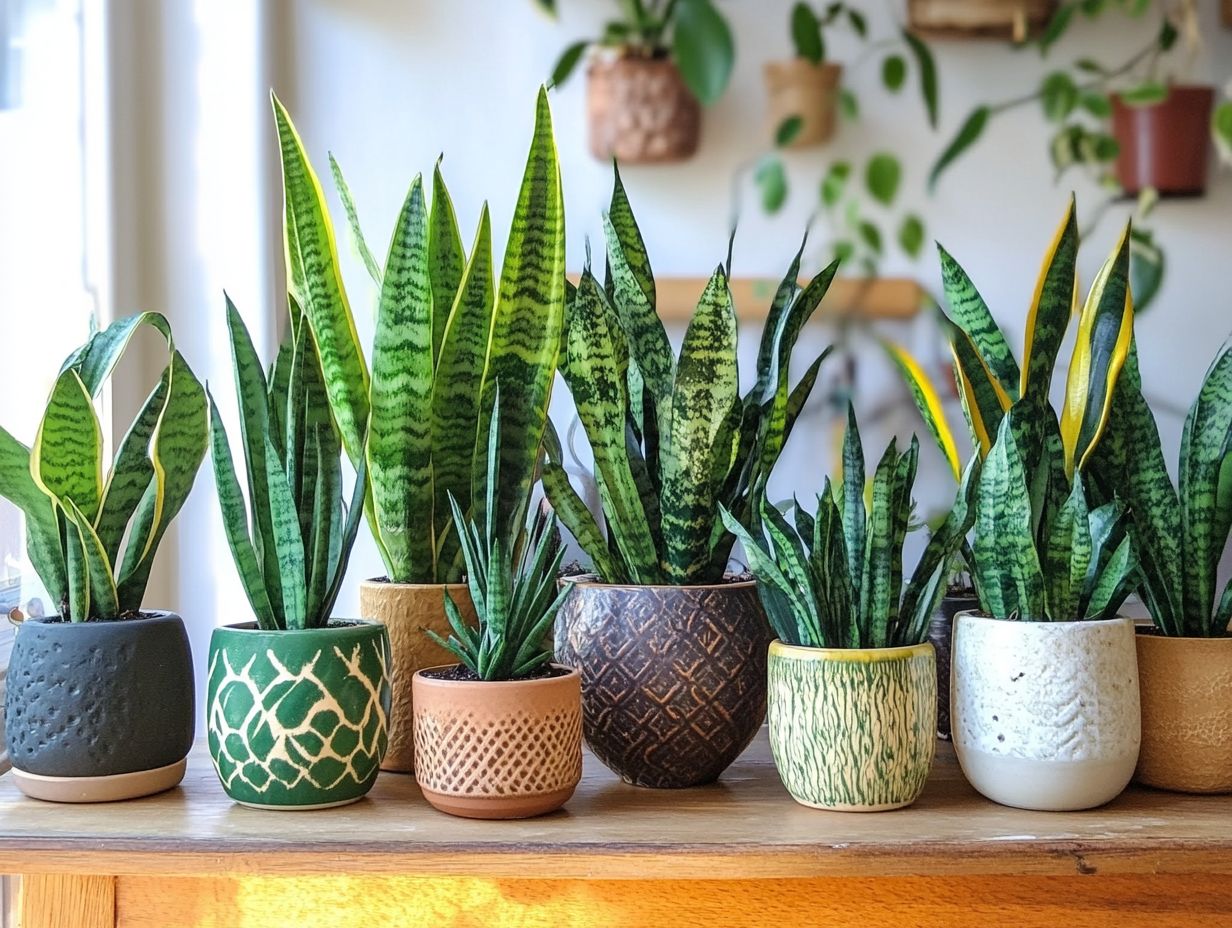
There are countless creative ways to incorporate snake plants into your home decor. Opt for terracotta pots for a rustic charm or choose stylish planters that complement your interior design.
In a bright room flooded with natural light, these resilient plants can flourish in sleek, modern pots, adding a touch of elegance and sophistication. In a cozy nook, layering them next to wooden furniture creates a warm atmosphere.
If you prefer a minimalist aesthetic, use simple, monochromatic planters to enhance the clean lines of your space beautifully.
For those who embrace bohemian styles, arranging snake plants alongside woven textiles and eclectic decor elements can effortlessly introduce harmony and personality into any room. Ultimately, how you style these versatile plants can significantly influence the vibe of your home.
Propagation and Repotting of Snake Plants
Propagation and repotting are crucial practices that enhance your plants’ health and increase your collection. By mastering these techniques, you ensure that your plants flourish and exude vitality.
Methods for Increasing Plant Population
You have several effective methods to propagate Sansevieria. Using leaf cuttings and dividing the plant are great options.
Familiarizing yourself with these methods allows you to grow more of these resilient plants easily. For instance, leaf cuttings involve snipping a healthy leaf and placing it in soil or water until roots develop.
Dividing the plant means separating established plants into smaller sections. Each new segment should have roots and leaves, promoting growth while rejuvenating the parent plant.
Each strategy has its advantages and considerations. Factors include the time for root development and the best season, typically spring, for dividing the plant.
When and How to Repot
Knowing when and how to repot your snake plants is essential for their growth. Choose terracotta pots with soil that allows water to drain easily.
Look for signs that it’s time to repot your plants. Signs include:
- Roots poking out of drainage holes
- Stunted growth
- Yellowing leaves, indicating your plant has outgrown its pot.
When repotting, select a pot slightly larger than the current one. This helps your snake plant thrive without becoming waterlogged.
Use a suitable soil mix, ideally designed for plants that store water. This ensures excess moisture escapes and promotes healthy care.
Frequently Asked Questions
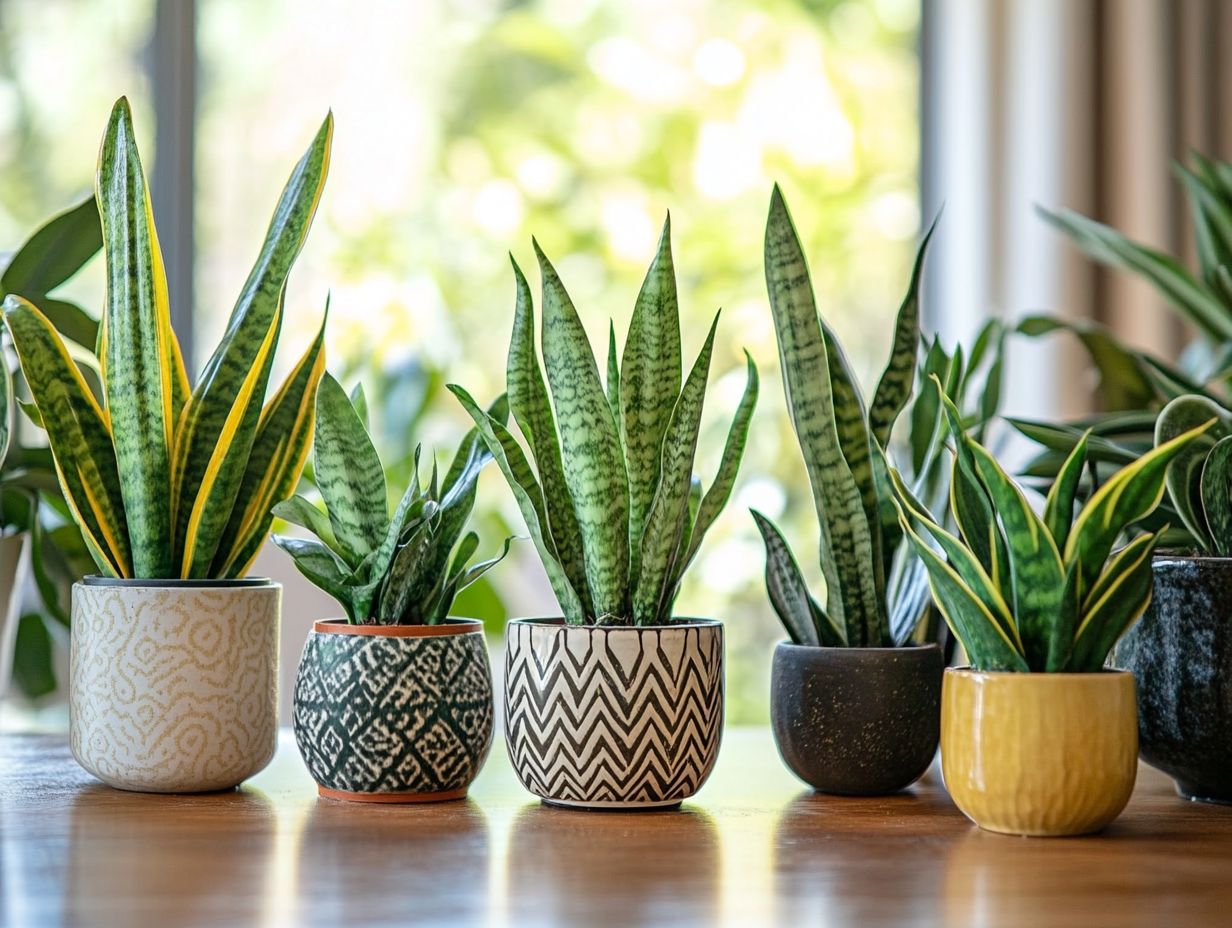
Here are some common questions about snake plant care:
1. What is the ideal care routine for snake plants?
Snake plants are low maintenance and require minimal care. They thrive in bright, indirect light and tolerate low light.
2. How often should I repot my snake plant?
Repotting every 2-3 years works best. Snake plants prefer to be slightly root-bound, so only repot when necessary.
3. Are there different varieties of snake plants?
Yes! There are several varieties, including Sansevieria trifasciata and Sansevieria cylindrica. Each has unique characteristics and care needs.
4. Can snake plants purify the air in my home?
Absolutely! Snake plants can remove toxins like formaldehyde and xylene, making them a great indoor addition.
5. Do snake plants need fertilizer?
They can thrive without fertilizer but can benefit from it once a month in spring and summer. Use a balanced fertilizer at half strength.
6. Can snake plants be propagated?
Yes! You can propagate by division or leaf cuttings. For division, separate the offsets and repot them. For leaf cuttings, cut a healthy leaf, plant sections, and keep the soil moist until new growth appears.

